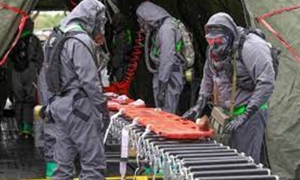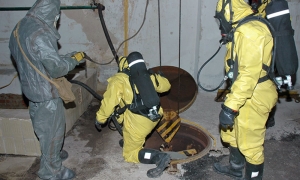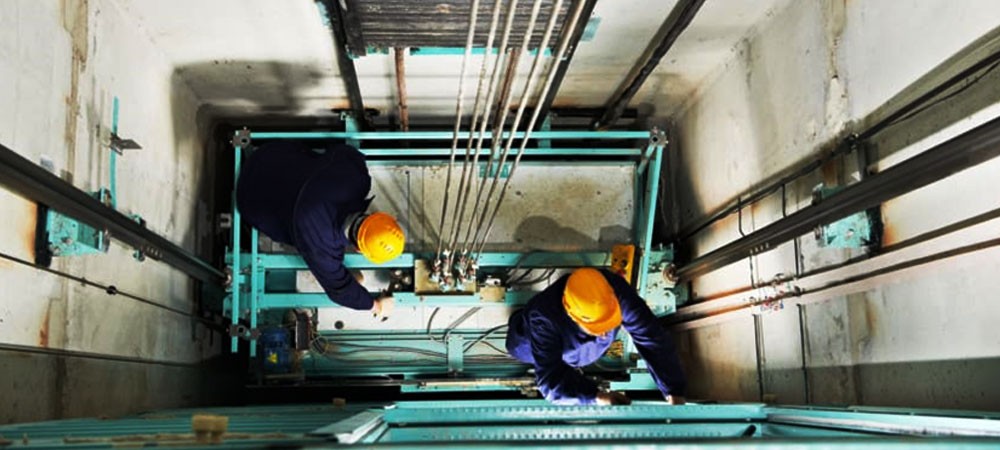Chemical Decontamination

Chemical Decontamination
Our decontamination process uses proven chemical technology that's faster, safer, and more environmentally friendly than traditional methods.
Why do you need this solution?
Traditional steaming and hydrocarbon flushing methods of refinery decontamination are costly and pose risks to workplace safety and health,
with crews exposed to hazardous hydrogen sulfide. Customers need to have complete confidence in the chemistry, expertise, and equipment for clean,
safe decontamination.
How does this solution make a difference?
Compared to steaming out, chemical decontamination will save you up to two days for large vessels, which means reduced downtime and cost savings for you. Added to this, chemical decontamination offers clean, gas-free conditions
for staff so that internal work, including hot work, can continue as normal.
How does it work?
Our innovative chemical washing approach rapidly penetrates deposits and suspends them for flushing, providing cleaner internal conditions and dramatically reducing preparation time. It also neutralizes pyrophoric deposits, removing the
potential for spontaneous fires leaving equipment cleaner and therefore safer.
The process meets all current regulations for vessel preparation and with biodegradable chemicals, is also environmentally sensitive.
While decontamination processes are tailored to your site, a typical procedure would involve circulating aqueous solutions in chemical products for up to eight hours, while maintaining a temperature of 80-90 ? C. The solution is pH neutral, so no added acids or alkalis are normally required.
If we suspect pyrophoric deposits are present, we add a rinse stage to render them harmless. We also capture residual hydrocarbons, safely transporting them in a temporary emulsion something steaming alone cannot achieve. Value delivered for you from individual vessels, towers, drums, or exchangers to entire processing units, we have the resources and expertise to decontaminate the largest systems operating on oil refineries and industry sites, on time and on budget.
CHEMICAL DECONTAMINATION
EMBARK offers comprehensive process decontamination services such as degassing and cleaning of hydrocarbon process systems that provide the plant with a hydrocarbon-free system to carry out maintenance works including hot works soon after the decommissioning of the plant and to reduce overall downtime. EMBARK is in a technical alliance with Clean Concepts Inc. USA, an agency that manufactures proprietary chemicals and is a renowned decontamination service provider.
GENERAL CLEANING REQUIREMENTS
DEGASSING
Degassing is treating the void volume, the empty space in a vessel, to remove volatile contaminants such as H2s and benzene to allow personal entry into the vessel.
Degassing follows the removal of the heavy hydrocarbons during either the vapor phase or using the circulation process. After this process is complete blinds can be removed and mechanical maintenance can begin.
DECONTAMINATION
Decontamination accomplishes degassing and removes light volatile contaminants from metal surfaces. Decontamination would also encompass iron sulfide removal In light-end units this would be suitable and would allow maintenance activities to begin. In heavy-end units, the proper chemistry can remove deposits and would allow maintenance activities to begin.
CLEANING
Cleaning is the removal of soluble solids, liquids, and gaseous contaminants. Entry can be made into vessels without respiratory protection and repairs, or inspection activities can start immediately.
ADVANTAGES
- Reduce Benzene Levels Below .05 ppm
- Zero Volatile Hydrocarbon Content
- Reduce Hydrogen Sulphide Levels
- Reduce Ammonia Levels
- Reduce Mercaptans
- Reduce Pyrophoric Iron Deposits
- Remove Paraffin and Asphalt Crude and Deposits
- Reduce the Need for Mechanical Cleaning
- Aids in the Cleaning and Removal of Coke and
- Carbonized Deposits
- Improves Oil Recovery
- Decrease Shut Down Time Up To 50-75%
CHEMICAL DECONTAMINATION
Decontamination - the process of removing or neutralizing contaminants that have accumulated on personnel and equipment - is critical to health and safety at hazardous waste sites. Decontamination protects workers from hazardous substances that may contaminate and eventually permeate the protective clothing, respiratory equipment, tools, vehicles, and other equipment used on site; it protects all site personnel by minimizing the transfer of harmful materials into clean areas; it helps prevent mixing of incompatible chemicals; and it protects the community by preventing uncontrolled transportation of contaminants from the site.
This chapter describes the types of contamination that workers may encounter at a waste site, the factors that influence the extent of contamination, and methods for preventing or reducing contamination. In addition, this chapter provides general guidelines for designing and selecting decontamination procedures at a site, and it presents a decision aid for evaluating the health and safety aspects of decontamination methods. The chapter does not cover decontamination of radioactively contaminated personnel or equipment. A health physicist should be consulted if this situation arises.
Decontamination Plan
A decontamination plan should be developed (as part of the Site Safety Plan) and set up before any personnel or equipment may enter areas where the potential for exposure to hazardous substances exists. The decontamination plan should:
- Determine the number and layout of decontamination stations.
- Determine the decontamination equipment needed.
- Determine appropriate decontamination methods.
- Establish procedures to prevent contamination of clean areas.
- Establish methods and procedures to minimize worker contact with contaminants during the removal of personal protective clothing and equipment (PPE).
- Establish methods for disposing of clothing and equipment that are not completely decontaminated.
The plan should be revised whenever the type of personal protective clothing or equipment changes, the site conditions change, or the site hazards are reassessed based on new information.






